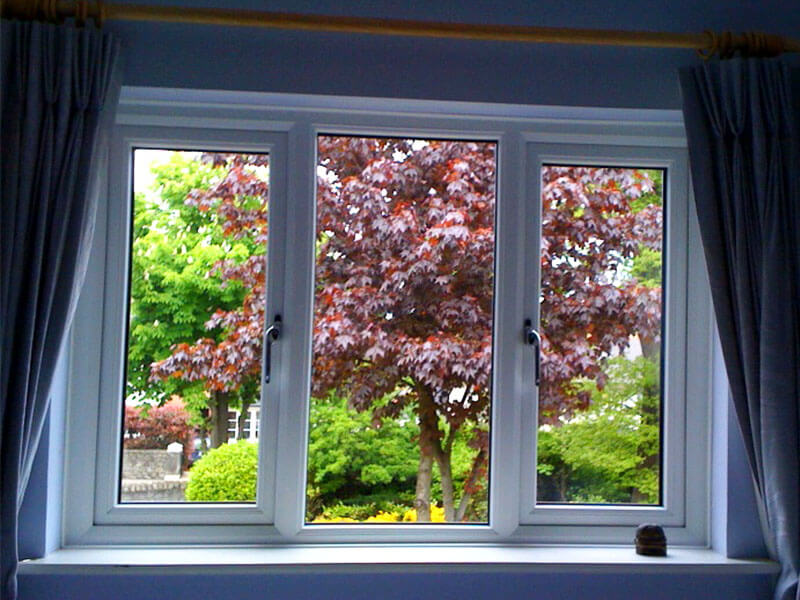Introduction
In the realm of architecture and home design, windows play a crucial role not only in aesthetics but also in energy efficiency, security, and comfort. The advent of new technologies and materials has led to significant innovations in window design, making them more functional and environmentally friendly. This report delves into the latest trends, technologies, and materials in window manufacturing, while also exploring the implications of these advancements on energy efficiency, sustainability, and overall building performance.
Historical Context
Historically, windows have evolved from simple openings in walls to complex structures that serve multiple purposes. In the early days, windows were primarily made of wood and glass, with minimal insulation properties. The Industrial Revolution marked a turning point, introducing mass-produced materials like aluminum and vinyl, which offered better durability and maintenance. Today, the focus has shifted towards energy-efficient solutions that align with modern sustainability goals.

Innovations in Window Technology
- Smart Windows: One of the most significant advancements in window technology is the development of smart windows. These windows can change their tint based on external light conditions, reducing glare and heat gain. Technologies such as electrochromic and photochromic glass allow for automatic adjustments, enhancing indoor comfort while minimizing energy consumption.
- Triple Glazing: While Double Glazing Installation-glazed windows have been the standard for years, triple glazing is gaining popularity, especially in colder climates. This technology involves three panes of glass separated by insulating gas, providing superior thermal performance and noise reduction. Triple-glazed windows can significantly lower heating costs and improve indoor comfort.
- Low-E Coatings: Low-emissivity (Low-E) coatings are thin, transparent layers applied to glass surfaces. These coatings reflect infrared light while allowing visible light to pass through, reducing heat transfer and improving energy efficiency. Low-E windows can help maintain a consistent indoor temperature, which is essential for both comfort and energy savings.
- Vacuum Insulated Glass (VIG): VIG technology takes insulation to the next level by creating a vacuum between two panes of glass. This design dramatically reduces heat transfer, making VIG windows highly energy-efficient. Although still relatively new to the market, VIG has the potential to revolutionize window insulation.
- Sustainable Materials: The push for sustainability has led to the use of eco-friendly materials in window manufacturing. For instance, fiberglass frames offer excellent insulation and durability while being recyclable. Additionally, manufacturers are increasingly using reclaimed wood and recycled aluminum, reducing the environmental impact of window production.
Trends in Window Design
- Large Format Windows: The trend towards open, airy spaces has led to an increase in the use of large format windows. These expansive glass panels allow for maximum natural light and unobstructed views, creating a seamless connection between indoor and outdoor spaces. However, they require careful consideration of energy efficiency and structural integrity.
- Minimalist Aesthetics: Modern design trends favor minimalist aesthetics, characterized by clean lines and unobtrusive frames. Slim-profile frames made from materials like aluminum or composite are becoming more popular, allowing for a sleek appearance while maintaining structural strength.
- Customizable Options: Homeowners are increasingly seeking personalized solutions that reflect their unique style. Manufacturers are responding by offering customizable window designs, including various shapes, sizes, and finishes. This trend allows for greater creativity in architectural design and enhances the overall appeal of a property.
- Integration with Smart Home Systems: As smart home technology continues to evolve, windows are being integrated into broader home automation systems. This connectivity allows homeowners to control window operations, such as opening or closing, via smartphone apps or voice commands, enhancing convenience and security.
Energy Efficiency and Sustainability
The importance of energy efficiency in window design cannot be overstated. Windows are responsible for a significant portion of heat loss in buildings, making their performance critical to overall energy consumption. The implementation of energy-efficient windows can lead to substantial cost savings and a reduced carbon footprint.
- Energy Star Certification: The Energy Star program provides guidelines and certifications for energy-efficient products, including windows. Windows that meet Energy Star criteria are designed to reduce energy consumption, thereby lowering utility bills and environmental impact.
- Building Codes and Regulations: Many regions have adopted stringent building codes that mandate energy-efficient window installations. Compliance with these regulations not only contributes to sustainability efforts but also enhances property value and marketability.
- Lifecycle Assessment: The environmental impact of windows extends beyond their operational phase. A lifecycle assessment considers the environmental effects of a window from production to disposal. Manufacturers are increasingly focusing on creating products with lower lifecycle impacts, promoting recycling and responsible disposal practices.
Conclusion
The evolution of window technology and design is a testament to the industry's commitment to innovation and sustainability. From smart windows that adapt to environmental conditions to energy-efficient materials that reduce energy consumption, the advancements in window technology are shaping the future of architecture and home design. As homeowners become more environmentally conscious, the demand for energy-efficient windows will continue to rise, driving further innovations in this vital aspect of building design. The integration of aesthetics, functionality, and sustainability will remain at the forefront of window development, ensuring that windows not only enhance the beauty of buildings but also contribute to a more sustainable future.
References
- U.S. Department of Energy. (2021). Energy Efficiency in Windows.
- National Fenestration Rating Council. (2022). NFRC Ratings and Certifications.
- International Window Film Association. (2020). The Benefits of Window Film.
- Energy Star. (2021). Energy Star Certified Windows.
- American Architectural Manufacturers Association. (2022). Window Performance Standards.







